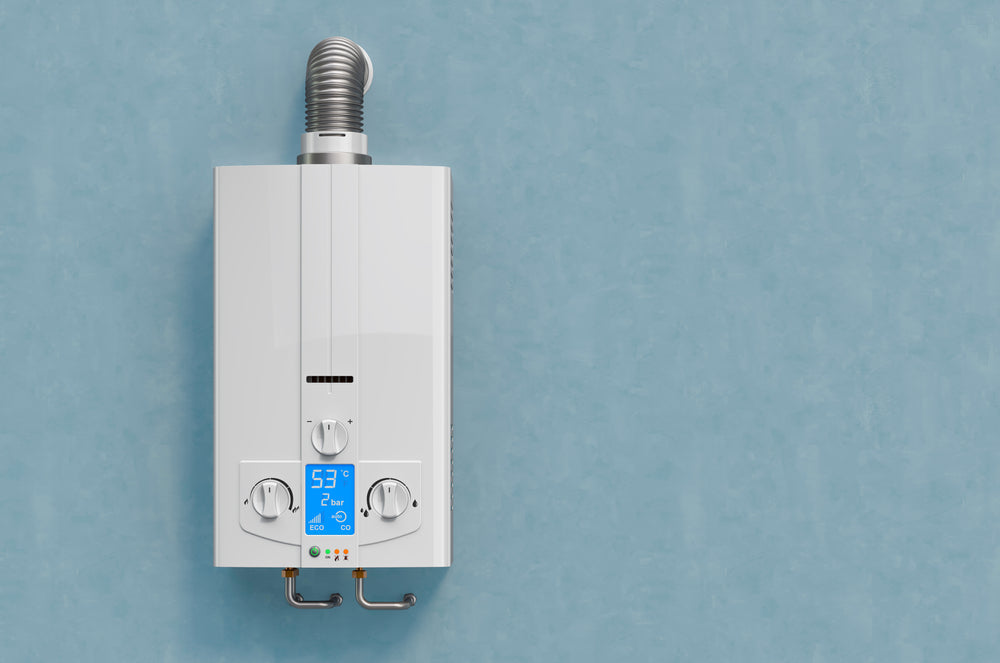
Electric geysers are a popular household choice, providing instant hot water and convenience. However, their efficiency and usage depend on various factors. This guide will explore how electric geysers work, their energy efficiency, and how to maximize their usage to save energy and costs.
How Do Electric Geysers Work?
Electric geysers use an electric heating element to warm water stored in a tank. The process begins when you switch on the geyser, and the heating element heats the water until it reaches the desired temperature. The thermostat then maintains this temperature by turning the element on and off as needed.
Components of an Electric Geyser:
- Heating Element: The core component that heats the water.
- Thermostat: Controls the temperature, ensuring it remains consistent.
- Tank: Stores the heated water until you need it.
Factors Affecting Electric Geyser Efficiency
Efficiency depends on several factors, including the geyser's design, insulation, and your usage habits.
a. Tank Insulation
The insulation quality of the tank plays a vital role in maintaining water temperature. High-quality insulation reduces heat loss, ensuring the water stays hot for longer, saving electricity.
b. Size of the Geyser
The size of the electric geyser should match your household needs. A smaller geyser may use less electricity but could run out of hot water quickly, leading to more frequent heating. A larger tank may retain heat longer but could be inefficient if your hot water demand is low.
Benefits of Electric Geysers
Electric geysers offer several advantages:
- Instant Hot Water: They provide hot water instantly, making them ideal for quick showers and kitchen use.
- Compact Design: Many models are compact, fitting easily in bathrooms or kitchens.
- Temperature Control: With adjustable thermostats, users can set the desired temperature.
Tips to Maximize Electric Geyser Efficiency
To get the most out of your electric geyser, follow these tips:
a. Set the Right Temperature
Setting your geyser's thermostat to an optimal temperature can save energy. A temperature range of 50-60°C is generally sufficient for most household needs. Higher temperatures consume more energy and may increase the risk of scalding.
b. Use a Timer
Installing a timer can help regulate when the geyser turns on and off. For instance, setting it to heat water during off-peak electricity hours can reduce your energy bill.
c. Regular Maintenance
Regularly maintaining your electric geyser ensures it functions efficiently. This includes checking for leaks, inspecting the heating element, and ensuring the thermostat is working correctly.
Choosing the Right Electric Geyser
When selecting an electric geyser, consider the following factors:
a. Capacity
Choose a capacity that matches your household's hot water needs. For a small family, a 15-25 liter geyser is usually sufficient. Larger families may require 50 liters or more.
b. Energy Efficiency Rating
Look for models with high energy efficiency ratings. An energy-efficient geyser will consume less power and provide long-term savings.
c. Brand and Warranty
Select a reliable brand that offers a good warranty. This ensures you have support for maintenance and repairs when needed.
Common Myths About Electric Geysers
Despite their popularity, some misconceptions surround electric geysers:
Myth 1: Electric Geysers Consume Too Much Energy
While it’s true that electric geysers use electricity, their efficiency depends on how they are used. You can significantly reduce power consumption by setting an optimal temperature and using a timer.
Myth 2: Keeping the Geyser On All Day Saves Energy
Many believe keeping the geyser on all day is efficient. In reality, turning it off when not needed is more effective. Heating water only when required reduces the electricity bill.
Comparing Electric Geysers to Other Water Heating Methods
Electric geysers are one of several options available for heating water. Let’s compare them with other methods:
a. Electric Geysers vs. Gas Geysers
Gas geysers heat water faster but may not be as efficient in the long term. They also require a gas connection, which may not be available in all areas. Electric geysers are easier to install and maintain, making them a more convenient option for many households.
b. Electric Geysers vs. Solar Water Heaters
Solar water heaters are eco-friendly and reduce electricity usage, but they depend on sunlight and may not be reliable during cloudy weather. Electric geysers, on the other hand, work regardless of weather conditions, offering consistency.
Environmental Impact of Electric Geysers
Electric geysers rely on electricity, and their environmental impact depends on the energy source. If your area uses renewable energy, like wind or solar, the environmental impact is lower. However, using electricity generated from fossil fuels increases carbon emissions.
To minimize your impact:
- Use Energy-Efficient Models: Choose electric geysers with high energy ratings.
- Adopt Energy-Saving Habits: Implement practices like setting the right temperature and using timers.
Cost Considerations When Using Electric Geysers
Electric geysers are generally affordable to purchase, but operating costs depend on your electricity rates and usage habits. Installing energy-efficient models and adopting energy-saving practices can help manage these costs effectively.
Cost-Saving Tips:
- Use the geyser only during necessary hours.
- Set the temperature to a moderate level.
- Regularly check for any inefficiencies or leaks.
Future Trends in Electric Geysers
The market for electric geysers continues to evolve. New models focus on increased efficiency, smart features, and environmental sustainability.
a. Smart Geysers
Smart electric geysers allow remote control through mobile apps, making it easier to manage heating schedules and monitor energy consumption.
b. Integration with Solar Panels
More brands are developing electric geysers that integrate with solar panels, combining efficiency with sustainability. These models offer the benefit of using renewable energy while still providing consistent hot water.
Safety Tips for Using Electric Geysers
While electric geysers are generally safe, it’s essential to follow basic precautions. Avoid placing them near flammable materials, and always check for proper wiring and insulation to prevent electrical hazards. Regular maintenance can also help identify potential issues early.
Choosing Between Instant and Storage Electric Geysers
When selecting an electric geyser, you can choose between instant and storage models. Instant geysers heat water quickly and are ideal for small families or limited use. Storage geysers, on the other hand, provide a steady supply of hot water, suitable for larger families or extended usage.
Conclusion
Electric geysers are a convenient and effective solution for hot water needs. Understanding their efficiency, choosing the right model, and using them correctly can help you maximize their benefits while minimizing costs. By keeping these tips in mind, you can make an informed decision and enjoy a reliable supply of hot water without a hefty electricity bill.








